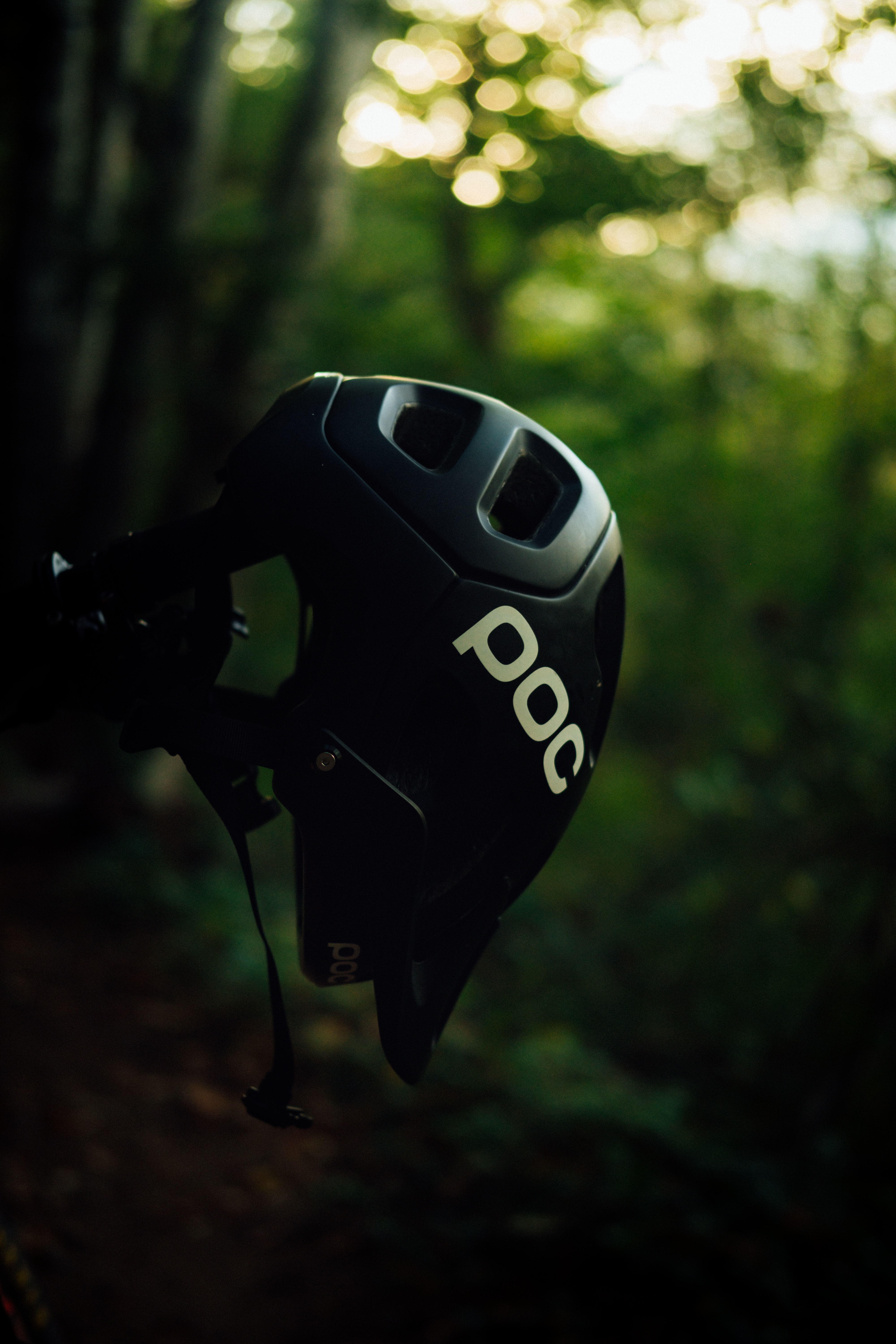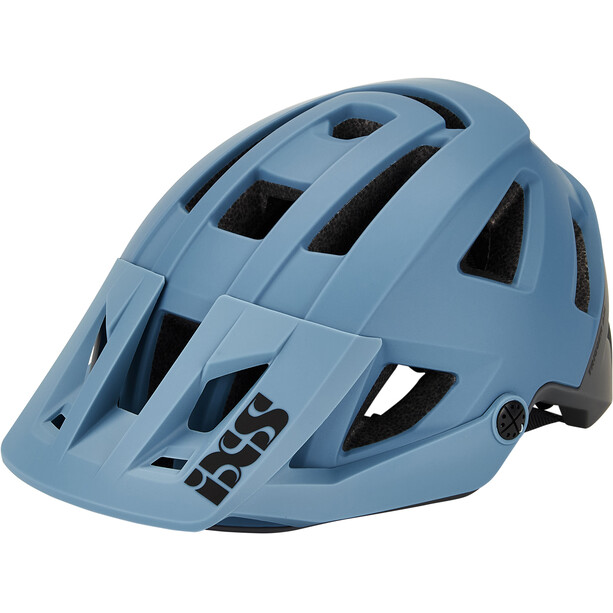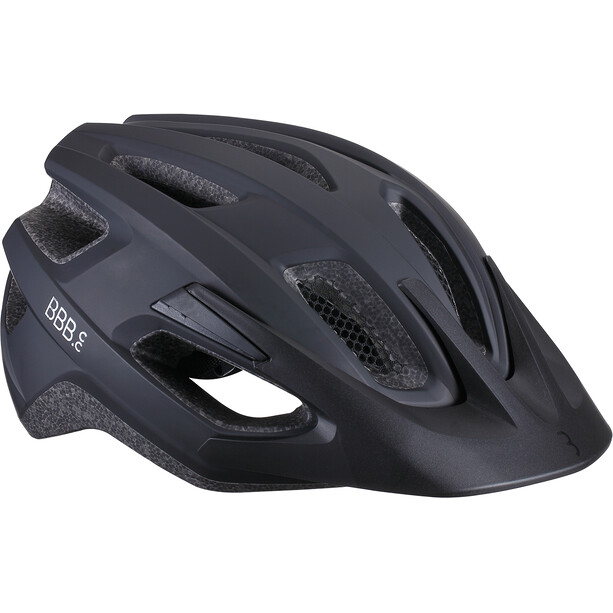How to choose a cycling helmet
Almost 2 000 different models from more than 35 manufacturers - how to find the best one? Don't worry - when shopping online, it's easy to narrow down your helmet choice to the exact model that suits you. Once you know the features that are important to you, you'll be sure to find the perfect helmet for you and, as a reward, you'll get the optimum protection for your future outings. Every five years it's always time for a new helmet: out with the old, in with the new! This is always the case when it comes to cycle helmets, which need to be replaced regularly for safety reasons. Because UV radiation causes artificial materials to degrade, the plastic used to make the helmet will degrade over a few years. That's why the outer shell of old cycling helmets sometimes cracks even with a strong finger pressure - it's certain that this helmet shell will not protect your head in case of an accident. This is precisely why a helmet should not be left lying around when not in use, but should wait for its next use, protected from sunlight. Your head is too precious to be exposed to unnecessary trauma!
MINIMISED RISK OF ACCIDENTS
Any helmet is better than no helmet at all. On average, 570 cyclists are injured every year. In most accidents, death is caused by a serious head injury sustained in the accident. Of the 43 cyclists who died in accidents between 2018 and 2020, 43 were not wearing helmets. One in three of them would probably have been saved by wearing a helmet. Of course, even the best cycle helmet does not offer complete protection, but wearing a helmet significantly reduces the risk of injury.
For a long time now, helmets have been scientifically proven to reduce the pressure on the head in a collision and thus the consequences of a fall: this significantly reduces the risk of fatal injuries in an accident (see section ‘Does a helmet protect against concussion?’). After an accident to the head, the helmet must be removed from service immediately, even if there is nothing wrong with it externally, as any hard impact will permanently damage the EPS foam used to cushion the helmet's "shock absorbing zone". Other invisible damage, such as hairline cracks, often occurs on helmets in accidents. In such a situation, your helmet has already served its purpose and unfortunately can no longer protect your head the next time a collision occurs. A new helmet must therefore be purchased immediately! Fortunately, in the event of an accident, many manufacturers offer cheaper helmets through a ‘Crash-Replacement’ guarantee.
CYCLING HELMET ASSEMBLY AND FUNCTIONS
To provide optimum protection, your cycling helmet must fit perfectly, should not be more than five years old, and should comply with the European DIN EN 1078 testing standard (all Bikester.co.uk helmets naturally comply with this standard). Doctors also recommend helmets with edges that extend down to the lower cheek or at least over the ears, as most serious injuries occur in these areas. However, many amateur cyclists do not want to wear, especially in hot weather, a closed-face helmet that offers the most protection and optimum protection - a helmet that makes many cyclists look like Darth Vader. This means that a sensible compromise must be made between maximum safety and comfort.
Even lightweight road bike and MTB helmets are justified if you ride at a leisurely pace. Today, the ‘All-Mountain’ name is being used for an increasing number of helmet models that have been launched specifically for mountain bikers. Their edges extend relatively far into the neck area, offering more protection in the event of a fall. While the previous problem with these helmets was poor ventilation, the new ‘All-Mountain’ helmets allow air to circulate through airflow channels inside the shell, ventilating the helmet and being much lighter than previous models. Some models also have camera mounts that automatically release in the event of an accident, while others offer an adjustable visor. Modern quality helmets are manufactured using a process known as moulding, where expandable polystyrene (EPS) is moulded directly into an outer plastic shell. This creates a strong bond between the outer shell and the EPS core. The soft inner liner helps absorb the energy of an accident, while the hard, low-density outer shell protects against mechanical impact while preventing aftershocks from a fall. Depending on the thickness of the outer shell, the helmet is called either a ‘Hardshell’ or ‘Microshell’ helmet. Hard-shell ABS (acrylonitrile butadiene styrene) models are more durable and heavier, which is why they are used for downhill cycling, for example, but equally they are also seen in everyday use (for example on children). On the other hand, thinner-shell ‘Microshell’ polycarbonate helmets are more convenient because they are lighter in weight.
PRICE, COMFORT AND STYLE

However, many helmet buyers prioritise other things than maximum safety: What does the helmet look like? How do I look with a helmet on? Does the helmet fit comfortably and easily and can you wear it for long periods of time without it getting heavy or pinching? Can a helmet be opened and closed with just one hand? How heavy is the helmet and is it well ventilated? And of course the question that often comes to mind: how much will a new helmet cost? Cheap children's helmets, such as the Meggy II KED, cost only £25-20, while adult helmets start from £35-40. Downhill helmets are also available for as little as £90 - and of course there is no upper price limit. Currently the most expensive helmet, the full-face jewel ‘Coron Söderström Edition’ from Swedish POC, costs a hefty £550, and the lightweight racing helmet with MIPS mechanism ‘Octal AVIP’ (also from POC) is also £360 - not cheap, but very comfortable, safe and perfectly ventilated. However, most people find their helmet somewhere between the price extremes, with the average consumer choosing a helmet in the £80-160 price range. At the top end of this scale is the MT500 helmet from Endura in Scotland, for example.
Thanks to the Koroyd technology (more on this later), this Endura MT500 is a stylish and noble helmet, very safe for 160 euros and still quite light (343 grams). The helmet has 12 large vents and a one-handed adjustment mechanism, as well as holders for sunglasses and camera. Of course, even with a smaller investment, you can get a durable and visually appealing helmet. For example, Alpina's Mythos 3.0 costs £80 - an ‘All-Mountain’ helmet that combines stylish looks with moulded technology for excellent lightness (245 grams), plus more practical features such as an adjustable visor and easily adjustable size. Generally speaking, as the price goes up, so do the requirements in terms of design and comfort. However, even an inexpensive helmet costing £50-60 will do the job - protect the wearer's head. However, this often means that the buyer has to compromise on comfort - for example, because there are usually only one or two sizes of low-cost models, which may not be suitable for people with really small or large heads.
VENTILATION AERODYNAMICS IN A CYCLING HELMET
When it comes to wheel ventilation, it has been said for years that the more holes, the better (and more expensive). However, this trend has been weakening, especially in racing and triathlon - the so-called Aero helmets have become more popular with these disciplines and are also favoured by non-professional cyclists. Over the last few years, the focus has shifted from well-ventilated, straight-perforated models to closed, highly streamlined models. Depending on the manufacturer, Aero helmets have either fixed or flexibly adjustable (sometimes even while riding) holes, while others rely on aerodynamically shaped models with smaller holes. Years ago, researchers at the Massachusetts Institute of Technology (MIT) showed how the Aero helmet can save up to 15 watts, depending on the model. Also, more and more helmets designed for mountain biking are now made without vents. However, it's not always wise to follow the latest fashion trends, as riding in the summer heat with an unventilated helmet is bound to leave your head uncomfortably damp from the sweat underneath. In this respect, cyclists who sweat, in particular, should pay particular attention to adequate ventilation when purchasing a helmet. For people cycling in sub-zero winter weather, a sealed and therefore also warming helmet can even be an advantage - but this aspect can also be dealt with by other means, such as using a warming helmet cap under the helmet (such as the Endura BaaBaa helmet cap) or a multifunctional tuba helmet (e.g. from PAC or Endura, price depending on the model around 13-30 euros).
MIPS AND KOROYD - WHAT DO THESE TERMS MEAN? From the outside, a helmet with MIPS looks pretty standard. Inside, however, there is ‘multiplying technology’ that has been developed in recent years by biomechanics and neuroscientists in Sweden for cyclists and motorcyclists, but also for hockey players and American footballers. MIPS stands for ‘Multi-Directional Impact Protection System’ - this is a system designed to protect the head or brain from rotational forces. To mitigate these forces, the inside of the MIPS helmet has a thin, bright yellow frame made of film, strips and ribbons inside the cushions. This structure mimics the natural cerebrospinal fluid system between the brain and bones, which absorbs and balances shocks in daily life. On impact, the yellow MIPS layer drops by up to one centimetre per millisecond, reducing the forces acting on the head. According to one manufacturer, this would mean the difference between a severe or mild brain injury. Manufacturers who do not use the MIPS feature in their helmets argue that the extra shell takes up more space in the helmet, making it larger. In addition, the fragility of the suspension is also a major drawback: even minor impact damage can damage the helmet and make it necessary to replace it sooner than usual. Helmet brands with an integrated MIPS system include Giro , Bell , POC and SixSixOne ; some other brands, such as the US manufacturer Bern, can be retrofitted if desired. A security alternative to MIPS is the so-called Koroyd technology. The ultra-lightweight material called Koroyd consists of honeycomb polymer tubes that are thermally welded for shock absorption and excellent stability. According to the manufacturer, the material yields in the event of an impact and thus distributes the force of the impact towards the helmet, reducing the risk of skull fractures and traumatic brain injuries. Koroyd technology is used in helmets such as Endura.
IS A CYCLE HELMET COMPULSORY?
Is a cycle helmet compulsory? According to the Highway Code, cyclists and bicycle passengers are strongly recommended to wear a safety helmet whilst underway. This means that there is no legal obligation to wear a cycle helmet and there is no penalty for not using it. However, the use of helmets when cycling is generally considered necessary as they protect the cyclist's head in the event of an accident or fall. The law is therefore open to interpretation, since in its preamble the provision is considered to be a recommendation, not binding legislation. If the question ‘is a helmet compulsory?’ is replaced by ‘is it worth wearing a helmet?’, the answer is simpler. Yes, it's worth it. A cycling helmet always absorbs some of the energy of the impact and reduces the force of the impact on the head. You should choose a cycling helmet that fits your head snugly and tightly, so that it protects your head best.


DOES A HELMET PROTECT AGAINST CONCUSSION?
The bad news first: even the best helmet cannot prevent the movement caused by a hard impact, but instead the brain responds to centrifugal force, which strikes the inside of the skull against its wall, causing a concussion. Depending on the intensity of the impact, nerve cell attachments may stretch or tear, which in turn can lead to swelling in the brain. The good news is that helmets offer excellent protection against many other consequences of accidents - such as bumps, scrapes and cuts, and even contusions and fractures of the skull. In any case, if you get a blow to the head, and especially if you have memory gaps, stop your bike ride there and seek medical attention immediately - even if you are not injured and are not in any pain. This is because even a ‘minor’ concussion can cause headaches and nausea, vomiting, problems with balance and concentration, convulsions and even worse consequences. All of this must either be diagnosed or ruled out by a doctor's tests.
SHOULD THE HELMET ALWAYS BE REPLACED AFTER AN ACCIDENT?
The short answer: no. The long answer: it is highly recommended. Every accident is different. Of course, if you haven't hit your head in an accident, you won't need to renew your fancy helmet. But if you've been hit on the head, the first thing you need to do is examine your helmet carefully: Have there been any cracks, dents or other visible damage caused by the accident? Does the helmet move in places where it was previously stiff? Nothing out of the ordinary - everything OK? Unfortunately not, because even if nothing is visible from the outside, the accident may have caused visually invisible hairline cracks or other defects in the helmet frame, hard shell or fastening system. By wearing a helmet that has been in an accident, you are knowingly taking a risk by wearing a helmet with a potentially broken frame or a collapsed polystyrene foam. In the next accident, your damaged helmet may provide only partial protection or no protection at all. This is why all helmet manufacturers recommend that helmets should be replaced after every accident involving the head. In the new spare better in this case! There are also often "Crash-Replacement" guarantees, where you can get a 50% discount on a new helmet you buy to replace one that has been damaged during the first year of use. In some cases, helmet replacement is even free for the first year. And since it is recommended that old helmets should be phased out every five years in any case, it makes sense to carry out this mandatory replacement earlier than planned in the event of an accident.
